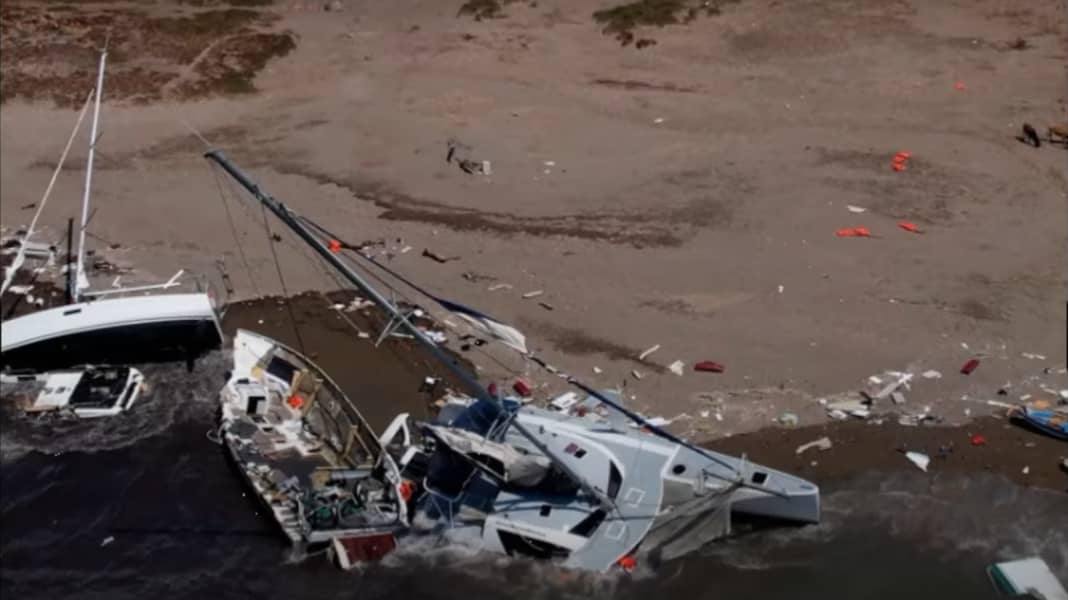
Last Thursday, a storm swept across Corsica and Italy, causing severe destruction with peak winds of 90 knots. Nine people are said to have fallen victim to it. It also left serious devastation in the marinas and anchorages. Stranded, sunken yachts, images of flying spray, owners fighting for their boats. Images that are now becoming more frequent and that you would rather not see.
At this point, you will find external content that complements the article. You can display and hide it with a click.
The extreme thunderstorm travelled from the south of France across Corsica and parts of Sardinia and then made its way to northern Italy.
The storm was not one of the dreaded "Medicanes". These cyclones, which owe their name to a variation of the term "hurricanes", have also been occurring in the Mediterranean for several years. Experts assume that this is a consequence of climate change due to the increased warming of the water. Most recently, the Medicane "Ianos" hit Sicily and Greece in 2020.
"Water temperatures in the region have been rising constantly since the 1980s. This means there is more energy in the lower layers of air. If very cold air drifts slowly over it at high altitude, medicanes can form," explains meteorologist Dr Michael Sachweh.
The full financial extent of the damage caused by the storm over Corsica cannot yet be quantified.
